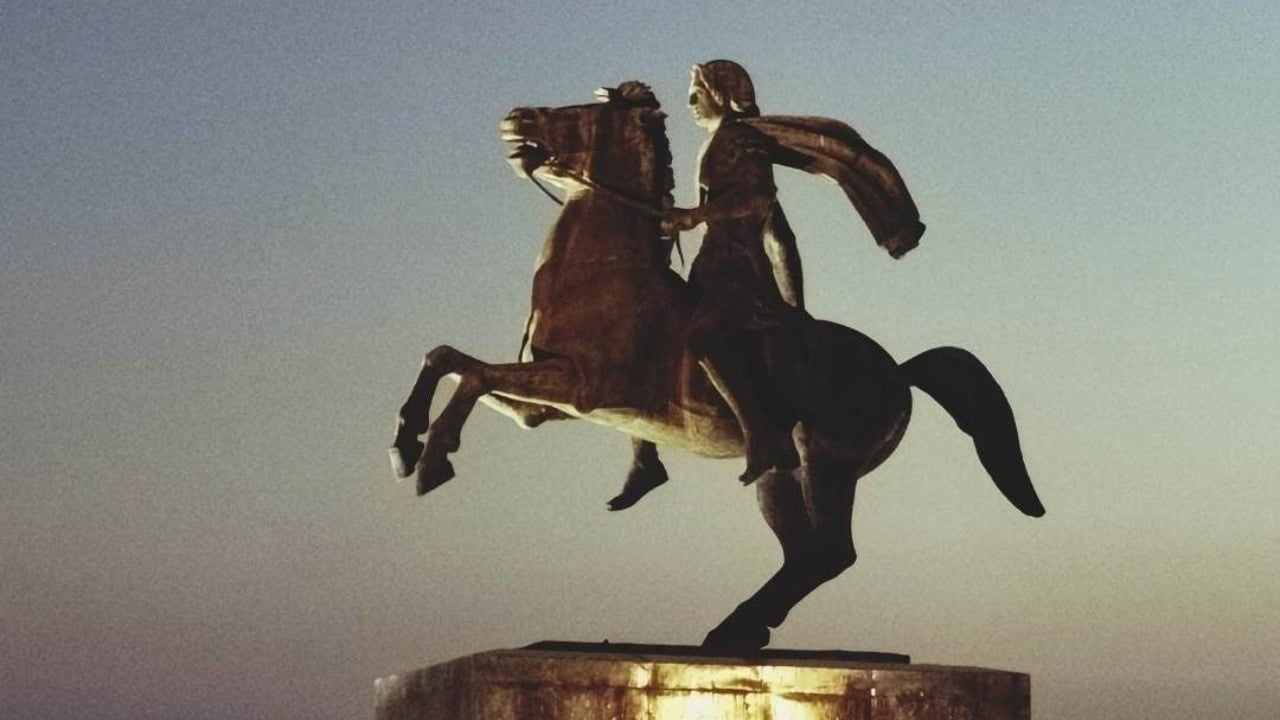
Bucephalus, the majestic black horse with a white star on his brow, is one of the most famous horses in history.
His fame and popularity across generations is linked to that of his rider and companion, Alexander the Great. The bond between Alexander and Bucephalus was legendary as it surpassed the typical relationship between a warrior and his horse. Bucephalus was more than just a horse to Alexander; he was a symbol of his power. He was Alexander’s loyal friend, and a key figure in his military conquests.
The story of Alexander and Bucephalus is one of trust, bravery, and an unbreakable connection that has captured the imaginations of historians, authors and archaeologists for centuries.
Bucephalus’ acquisition and training
In 346 BCE, a horse trader from Thessaly named Philoneicus brought a magnificent horse to the court of King Philip II of Macedon. It was described as being black with a large white star on its forehead.
The horse, later named by Alexander as Bucephalus (Βουκεφάλας), was considered untamable due to its wild and fearsome nature. As a matter of fact, its given name is a combination of the Greek words “bous,” meaning ox, and “kephalos,” meaning head, perhaps a nod to the horse’s intractable nature.
Many tried to tame him, but none succeeded. This was the reason why Philip ordered the horse to be led away. However, the then-young Prince Alexander, just 12 or 13 years old at the time, saw something special in Bucephalus. He told his father that he could tame the horse.
Alexander approached Bucephalus calmly. He had noticed that the horse was afraid of his own shadow. So, he turned the horse to face the sun and gently took the reins, eventually mounting him. This insight and empathy on behalf of Alexander allowed him to connect with Bucephalus in a way no one else could. This event marked the beginning of an extraordinary partnership and foreshadowed the future of Alexander as a great leader.
Bucephalus in battles and campaigns

Bucephalus accompanied Alexander on his epic military campaigns. The horse served as his trusted companion in countless battles. The bravery of this horse along with his resilience –mirrored that of his rider– made them face together the challenges of warfare across vast territories.
Bucephalus was more than just a means of transportation for the Macedonian king. His presence on the battlefield provided Alexander with a psychological advantage, inspiring his troops and intimidating his enemies.
One of the most notable instances of the valour of Bucephalus was during the Battle of the Hydaspes in 326 BCE.
Alexander’s army faced the formidable forces of King Porus. There, Bucephalus played a crucial role in the victory. Despite sustaining significant injuries, the horse carried Alexander through the thick of the battle, displaying remarkable courage and stamina.
Throughout their campaigns, Alexander and Bucephalus developed an unshakable bond. The horse would allow no one else to ride him, and Alexander trusted him implicitly.
This connection between rider and steed became the stuff of legends. It symbolized the power of loyalty and the strength of a shared purpose. This is why Bucephalus was not merely a war horse, but an extension of Alexander himself, a partner in his quest for glory.
Bucephalus’ death and its impact on Alexander
In 326 BCE, after the Battle of the Hydaspes, Bucephalus succumbed to his wounds or old age –this is not clearly known according to historical evidence.
Alexander was devastated by the loss of his beloved companion. He mourned deeply, recognizing the profound impact Bucephalus had on his life and conquests. In honour of his fallen steed, Alexander founded a city near the site of the horse’s death, naming it Bucephala.
The death of Bucephalus marked a turning point for Alexander. The loss of his trusted companion was not just a personal tragedy but also a symbolic defeat. It signaled the end of an era and foreshadowed Alexander’s own mortality, with his early death.
Bucephalus’ legacy
The story of Bucephalus and Alexander has endured through the ages. This bond has been inspiring countless works of art, literature, and popular culture for centuries. The name of this horse has become synonymous with loyalty, bravery, and the unbreakable bond between a rider and their mount.
The legacy of Bucephalus extends far beyond his participation in military campaigns. He represents the ideal of a perfect partnership, one built on trust, understanding, and mutual respect. The relationship between Alexander and Bucephalus has become a timeless example of the power of the human-animal connection.
Today, Bucephalus is remembered through various depictions in sculptures, paintings and movies. His name can be found in everything, from cities to brands to literary works, ensuring that his legend lives on.
The story of Bucephalus and Alexander continues to captivate audiences, reminding us of the extraordinary bond that can be achieved when two souls, human and equine, unite in purpose and spirit.
The connection between Alexander and Bucephalus has managed to become eternal. It speaks to the enduring nature of the bond between humans and horses and is a tale that will continue to inspire and captivate for generations to come.
See all the latest news from Greece and the world at Greekreporter.com. Contact our newsroom to report an update or send your story, photos and videos. Follow GR on Google News and subscribe here to our daily email!



